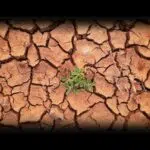National Frog Month takes place in April. Many people are unaware that frogs represent transition — moving from one stage of life to the next. They serve as excellent reminders of adaptability and the ability to move on from any situation, place, or thing. Aside from what they represent, the importance of frogs in our ecosystem is highlighted this month. Fish, mammals, and birds consume them as food, while carnivorous frogs feed on mosquitoes and flies, contributing to the food chain cycle.
History of National Frog Month
The ancestors of modern frogs have existed since 240 million years ago, as long as the dinosaurs. Fossil records show that they have been roaming around Earth before any known animals even existed. A frog-like animal fossil was found in the Triassic rocks of Madagascar that were known to have existed around this time. However, they are different from the modern frogs we’re familiar with today. They are called Triadobatrachus, frogs’ first ancestors. They are known for having 14 vertebrae in their spinal column, with a tail made up of six more vertebrae — a lot more than the modern frogs’ five to nine vertebrae.
These ancestral amphibians evolved into true frogs during the Jurassic era, roughly 208 to 146 million years ago, though their skeletal elements differed from those of modern frogs. Their main survival skill, adaptability, is credited with this evolution. Frogs are well-known for their ability to thrive in any environment.
Amphibians can live on land or in the water. Their ability to live two lives has allowed them to evolve and live to this day. They can live anywhere there is fresh water, from the Arctic’s coldest regions to the driest deserts. Despite their inherent ability to adapt to any situation, the global population of frogs is steadily declining. In the 1990s, a notable observation was made about how some of their species had vanished from various parts of the globe. Some biologists believe that human-caused destruction, such as water pollution and C.F.C. emissions, is to blame.
It’s National Frog Month, which means it’s time to think about how to protect one of the planet’s earliest inhabitants.
National Frog Month timeline
Madagascar is known to have frog ancestors.
Dinosaurs coexist with ancient frogs as they evolve into modern frogs.
Equatorial Guinea is home to the world's largest frog, weighing around seven pounds.
Several frog species, including the Australian frog, golden toad, and Yosemite toad vanish, according to biologists.
National Frog Month FAQs
Are frogs toxic?
Frogs have toxins hidden beneath their skin. They’re poisonous but not fatal.
How long do frogs live?
According to studies, frogs live for 10 to 12 years.
How many eggs can a female frog lay?
Female frogs have the ability to lay up to 4,000 eggs at once.
National Frog Month Activities
Visit a frog pond
Make plans to visit a frog pond in April. During this trip, you may observe their behavior and mannerisms.
Go to the zoo
If you can't find a frog pond near you, a trip to the zoo is a good alternative. It's also a learning experience about the frogs' history, adaptability, and overall importance to the Earth's ecosystem.
Save a frog
You can help save some frog species from extinction by being aware that they are slowly vanishing despite their ability to adapt and survive. Save the frogs by visiting savethefrogs.com and learning how you can help them live longer. Saving the frogs is saving the environment.
5 Interesting Facts About Frogs
The world is full of frogs
There are over 5,000 species of frogs on the planet.
Agile jumpers
Frogs are known for being able to jump at least 20 times their body weight.
Male and female frogs have distinct characteristics
The ears of a male frog are larger than those of a female frog; female frogs have smaller ears.
They’re found in every region except one
Frogs do not live in Antarctica, which is the only place on the planet where they do not exist.
They need moisture to survival
To survive, frogs hide in damp, moist places like ponds, debris piles, and logs.
Why We Love National Frog Month
They play an important role in the environment
Frogs are underappreciated animals. They not only provide food for other animals, but they also hunt and eat pests like flies and mosquitoes.
They have a fascinating history
It's interesting to consider how they coexisted with dinosaurs and other creatures that have since vanished with the wind. Their ability to survive every plague, disaster, calamity, and pandemic on the planet is legendary.
They symbolize strength and resilience
Frogs are a good choice if you're looking for a spirit animal to guide you in your life. They're experts at transitioning from one era to the next and have a remarkable ability to survive in any situation.
National Frog Month dates
| Year | Date | Day |
|---|---|---|
| 2026 | April 1 | Wednesday |
| 2027 | April 1 | Thursday |
| 2028 | April 1 | Saturday |
| 2029 | April 1 | Sunday |
| 2030 | April 1 | Monday |



















































































































































